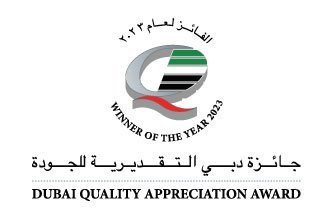Webinars
Award-winning global training solutions
Blue Ocean is a world leader in accelerating careers and transforming organizations.
We foster empowerment by reinventing the learning experience of the workforce and redesigning businesses to be more agile.
Our 25+ years of experience in bridging the gap between infrastructure and knowledge by delivering world class learning and consulting solutions has made us a trusted partner for our B2B and B2C clients.
Workplaces and workforces are constantly defined by change and innovation. Our training solutions are indispensable when it comes to skill building and retention. At Blue Ocean, the collaborative learning methodology is a blend of high-quality research and inputs from industry experts and clients, designed to help individuals advance into new roles.
Our international award-winning services include a wide array of international certification programs, corporate training, consulting, conferences and more.

Diverse range of accredited professional certifications and courses

Learning methodology focussed on skill building and retention

Mentorship to help you deliver sustained outcomes for your organisation

Multiple modes of learning delivered through global alliances
Award-winning global training solutions
Blue Ocean is a world leader in accelerating careers and transforming organizations. We foster empowerment by reinventing the learning experience of the workforce and redesigning businesses to be more agile.
Our 25+ years of experience in bridging the gap between infrastructure and knowledge by delivering world class learning and consulting solutions has made us a trusted partner for our B2B and B2C clients. Workplaces and workforces are constantly defined by change and innovation. Our training solutions are indispensable when it comes to skill building and retention.
At Blue Ocean, the collaborative learning methodology is a blend of high-quality research and inputs from industry experts and clients, designed to help individuals advance into new roles.
Our international award-winning services include a wide array of international certification programs, corporate training, consulting, conferences and more.

Diverse range of accredited professional certifications and courses

Learning methodology focussed on skill building and retention

Mentorship to help you deliver sustained outcomes for your organisation

Multiple modes of learning delivered through global alliances
Key Figures
These numbers are a powerful reflection of our quality, commitment, and integrity.
25+
years of experience
500,000+
global alumni community
1,600+
corporate clients
25+
years of experience
500,000+
global alumni community
1,600+
corporate clients
75+
nationalities trained
500+
training programs
operating in
16+
countries
75+
nationalities trained
International Affiliations
In alignment with our vision to excel and empower, Blue Ocean offers a wide variety of training courses accredited to globally leading institutions, targeted to enhance and build capable professionals in the fields of procurement, supply chain logistics, human resources, finance and accounting, project management, quality management and aviation. Earning professional certification from these associations not only allows participants to enrich their professional knowledge and skills and become leaders in their industries but also recognize their commitment to excel.

International Affiliations
In alignment with our vision to excel and empower, Blue Ocean offers a wide variety of training courses accredited to globally leading institutions, targeted to enhance and build capable professionals in the fields of procurement, supply chain logistics, human resources, finance and accounting, project management, quality management and aviation. Earning professional certification from these associations not only allows participants to enrich their professional knowledge and skills and become leaders in their industries but also recognize their commitment to excel.
EXCELLENTTrustindex verifies that the original source of the review is Google. Dr. Hind : A teacher in every sense of the word. Thank you for your efforts.Trustindex verifies that the original source of the review is Google. الدكتورة هند ماقصرت الله يعطيها العافية ويقويهاTrustindex verifies that the original source of the review is Google. شرح وافي ومكمل من الدكتورة هند❤️Trustindex verifies that the original source of the review is Google. ممتازة جداً 👍Trustindex verifies that the original source of the review is Google. شرح ممتاز الدكتوره ماقصرتVerified by TrustindexTrustindex verified badge is the Universal Symbol of Trust. Only the greatest companies can get the verified badge who has a review score above 4.5, based on customer reviews over the past 12 months. Read more
London
Riverbank House 2, Swan Lane London EC4R 3TT
Ph: +44 20 3411 7234
Email : info@blueoceanacademy.uk
Dubai
B2505, Latifa Towers, Sheikh Zayed Road, Dubai, P.O. Box 116687, Dubai, UAE.
Ph: +971 4 314 8500
Email : info@blueoceanacademy.com
Riyadh
530/4, Fifth Floor, Al Akaria 2, Gate 8, Olaya, Riyadh, Saudi Arabia.
Ph: +966 112 60 5558
Email : info@blueoceanacademy.com
New Delhi
1515 Mohan Dev Building, Tolstoy Marg, Connaught Place, New Delhi-110001
Ph: +91 11 209 15150
Email: info@blueoceanacademy.in
Pune
613, 6th floor LMS Finswell, Sakore Nagar Viman Nagar Pune 411014
Ph: +91 20 493 26692
Email : info@blueoceanacademy.in
Kochi
Carnival Infopark Phase1, 2ndFloor, Infopark SEZ, Kakkanad, Kochi-682030
Ph: +91 484 4604041
Email : info@blueoceanacademy.in
Hyderabad
#3, Ground Floor, Cyber Crown, Hitech City, Madhapur, Hyderabad – 500081
Ph: +91 40 676 05533
Email : info@blueoceanacademy.in
Global Presence
London
Riverbank House 2, Swan Lane London EC4R 3TT
Ph: +44 20 3411 7234
Email : info@blueoceanacademy.uk
Dubai
B2505, Latifa Towers, Sheikh Zayed Road, Dubai, P.O. Box 116687, Dubai, UAE.
Ph: +971 4 314 8500
Riyadh
530/4, Fifth Floor, Al Akaria 2, Gate 8, Olaya, Riyadh, Saudi Arabia.
Ph: +966 112 60 5558
New Delhi
1515 Mohan Dev Building, Tolstoy Marg, Connaught Place, New Delhi-110001
Ph: +91 11 209 15150
Email: info@blueoceanacademy.in
Pune
613, 6th floor LMS Finswell, Sakore Nagar Viman Nagar Pune 411014
Ph: +91 20 493 26692
Email : info@blueoceanacademy.in
Kochi
Carnival Infopark Phase1, 2ndFloor, Infopark SEZ,Kakkanad, Kochi-682030
Ph: +91 484 4604041
Email : info@blueoceanacademy.in













